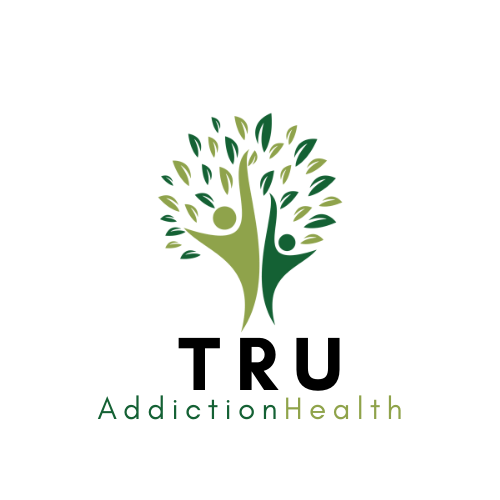When Michael McGrath, MD, medical director of the Ohana High-end Alcohol Rehab on the Big Island of Hawaii, trains primary care physicians, he informs them that talking with patients about substance use disorders resembles having a demanding, strange discussion. However it’s a brave one due to the fact that of the preconception associated with drug and alcohol disorders.

McGrath begins the discussion with patients by revealing that physicians now comprehend that addiction is an illness– one for which the patient isn’t accountable. He discusses that there’s both a hereditary and a nature/nurture part of the disorder and guarantees them that he will not evaluate or desert them however rather help them discover treatment and ensure they get on the course to health.
It’s all too common to see patients with a substance use disorder in today’s primary care population. According to Medscape’s Physicians’ Views on Today’s Divisive Social Issues Report 2022, 42% of physicians see patients with a substance use disorder frequently in their practices. Nevertheless, recognizing substance use disorders and treating or referring patients for them is a complex issue.
According to the Recovery Research Study Institute, a leading not-for-profit orgnaization from Massachusetts General Hospital devoted to advancing addiction treatment and recovery, about 20 million people in the US experience asubstance use disorder Majority (54%) requirement assistance with theirrecovery The National Institute on Drug Abuse reports that substance abuse and addiction cost society more than $740 billion yearly in office efficiency, healthcare, and crime-related costs.
In spite of the obstacles, doctor specialists provide suggestions on how to treat and help patients who have substance use disorders better.
A Brave Discussion
Typically, the primary care doctor or emergency doctor is the very first to understand of a patient’s issue with a substance or arelapse In numerous communities where scarcities of specialized physicians and nonphysician treatment options for substance use disorders aren’t readily available, there’s typically restricted time and resources to help patients with these disorders.
Patients frequently notice physicians are hurried and might not be interested in hearing about their drug or alcohol issues. Reddit threads are filled with stories like that of user “Cyralek,” who state that the 2 physicians they have actually seen considering that stopping drinking didn’t reveal much interest in the issue beyond buying liver function tests.
In an across the country research study by scientists at Washington University School of Medicine in St. Louis, 80% of patients who fulfilled the diagnostic requirements for substance use disorder checked out a medical professional, hospital, or center for some factor over the previous year. Just 1 in 10 were motivated to cut down on drinking or receive any kind of treatment or recommendation for substance misuse.
Emma Gordon, creator of a salvage lawn in Los Angeles, states she used to abuse alcohol and that it impacted every element of her life. Her bro attempted to step in, however absolutely nothing worked up until she lastly informed a doctor. “I confessed my issue and felt exceptionally calm when she responded as though it was all typical. I think that was my primary step to ending up being a much better me. I was happy I had actually gone to see a medical professional,” states Gordon.
Though physicians in primary care might not have more than a 15-minute consultation slot, taking the chance to start a substance use disorder discussion when required is essential, states McGrath. The CAGE-AID screening tool, that includes questions such as, “Have you ever felt you ought to reduced on your drinking or drug use?,” is an exceptional starter. McGrath likewise encourages primary care clinicians to lower the limit of issue to a single favorable response instead of numerous.
Medical professionals aren’t always rewarded for the time it takes to establish a connection with patients and to have a discussion that leads to asking, How much are you consuming? “The system in primary care isn’t established that method,” stated Lucy McBride, MD, an internist in Washington, DC.
Patients Do Not Typically Ask for Help
In a best world, patients having a hard time with a substance use disorder would provide with a request to stop utilizing drugs or alcohol, as Gordon did. While that does occur often, the onus is on the doctor to screen for substance misuse.
” Keep in mind, this is the illness that informs you that you do not have an illness,” McGrath states. He likewise states that the use of screening instruments is a bare minimum. When patients are in the throes of a substance use disorder, the prefrontal cortex does not work successfully. McGrath states there’s an modification of awareness so that the patient does not understand the degree of the illness. “Typically just asking the patient is falling far brief. It’s the most significant error I see,” he states.
Self-reporting from the patient might be undependable. “That would resemble a patient coming in and stating, ‘My blood sugar level is 700, and I desire you to offer me some insulin,'” McGrath states. Rather, clinicians in the field require a more unbiased measurement.
Possibly that suggests asking the patient to bring in a loved one at the next see or digging deeper into the discussion about alcohol and drugs and their function in the patient’s life. And to truly have an effect, McGrath stated, the clinician needs to talk to the patient about recommendation for additional examination.
” You have to get collateral history; that’s the goldmine for the clinician,” McGrath states. “It might take a couple of more minutes or indicate talking to a family member, however it can make the distinction in between life and death.”
” I am happy to my physician who discussed this [substance use disorder] with me in information,” states Ronald Williams, another Angeleno who braved the tough conversation with his physician. Williams states his physician discussed it in a great way and that if the physician had not directed him empathetically, the discussion may not have actually gone as well.
” We inspect patients’ cholesterol. We get them on the scale. However there is no blood test to find just how much they’re consuming, no PCR to test for social anxiety, no MRI that compares their leisure marijuana use and marijuana abuse,” stated McBride.
Examine the Prescription Drugs They’re Taking
Another thing McGrath suggests is for primary care physicians to inspect the prescription drug tracking program (PDMP) database in their state to help look out to a patient with asubstance use disorder The CDC’s PMPD standards advise that the clinician check on a patient every 3 months or each time they composean opioid prescription Designating a staff member or a nurse to inspect the database can help discover a history of doctor-shopping or use controlled compounds.
” There’s been a lot of times I have actually gone on self-report, and I have actually been hoodwinked due to the fact that I do not have a truth-o-meter and I can’t inform when a patient is informing the reality,” states McGrath.
He is likewise a big supporter of point-of- service screening. Patients can urinate in a cup that has amino assay strips on the side, like an instant COVID-19 test, or they can spit into a saliva cup. “It’s truly useful for the patient and the clinician to understand best then at the point of service if there is a substance present, and what it is,” McGrath stated.
It can be part of the bigger discussion when an issue with compounds has actually been discovered. The clinician can state something like, “Let’s see where you are right now today as far as what you have in your system, and where we must go from here.”
Other Barriers Physicians Face
Numerous physicians might feel unprepared to fulfill the requirements of patients with substance use disorders or recommend medication that blunts yearnings and minimizes the desire to beverage without the requirement for unique training. Researchers at the National Institutes of Health discovered that just 1.6% of people with a substance use disorder were recommended medication to help manage it.
In the biggest research study on how primary care physicians address substance use disorders, less than 20% explained themselves as really ready to identify alcoholism or unlawfuldrug use Considering that a lot of patients choose to seek treatment from their primary care physician, at least at first, not being prepared is an issue.
Although recommendation for specialized addiction treatment is advised for patients with extreme substance use disorders, primary care physicians with proper experience, training, and assistance can provide some of these services. “In an perfect world I would not have to refer patients out, considering that they’re far more most likely to talk with their primary care provider about delicate, intimate subjects,” states McBride.
The Concern of Compensation
Billing for substance use disorder therapy or coordination of care is still tough, and how to get compensated stays a problem for numerousphysicians Compensation might not sufficiently compensate providers for the extra time and staff required, however some modifications have actually been favorable.
For example, the American Society for Addiction Medicine reports that in 2022, Medicare broadened the doctor charge schedule for opioid and SUD therapy to consist of repayment for telemedicine services.
Finding out the billing CPT codes for numerous addiction treatments and therapy, or having a billing service that comprehends them, is essential to repayment and keeping income running efficiently.
At the minimum, establishing relationships with treatment centers and experts in the community can help physicians with recommendations and with identifying the level of care required. Physicians can help help with that care with regular reassessment and regular follow-ups, in addition to by asking for reports from the treatment facility, continuing treatment of medical conditions, and enhancing the value of continued substance use disorder treatment.
McBride states that primary care physicians can and must make their workplace a safe, blame-free medical housefor patients with substance use disorders “Patients likewise require to comprehend they must bring their entire selves to the physician– to talk about their sleep, what they take in, their depression, and not simply about alcohol, however their relationship with it, and other compounds,” she states.
” There requires to be time to talk about it.”
For more news, follow Medscape on Facebook, Twitter, Instagram, and YouTube
